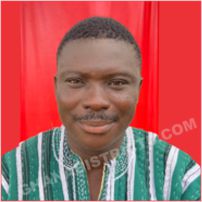

Introduction
The overall development of a country depends on the production of goods and services. Critical to the production process is the human capital of the country. Although all persons regardless of age and sex consume goods and services produced only a small section of the populace produces them. This group of working population is referred to as the employed population or the working force. The type of economic activity pursued is influenced by the nature of the economy and level of socio-economic development (Hull, 2009). All things being equal, the larger the employed population, the more wealth is created leading to the improved standard of living of the general populace.
This chapter presents information on the activity status, size and structure of the labour force, and its distribution by occupation and industry. Also the employment status and employment sector of the population is analyzed. This section also examines the economically active and economically not active population. Each of these population characteristics are analyzed by age and sex.
Economic Activity Status
The economically active population comprises the employed and unemployed persons 15 years and older. The economically not active persons represent those who did not work and were not seeking for work. It includes full time students, persons retired from work, persons too old or too young, the disabled and homemakers. The International labour regulations stipulate 15 years as the minimum working age (ILO, 1973, Children’s Act, 1989). Table 4.1 presents data on population 15 years and older by activity status and sex.
Of the total population of the economically active (14,879), 98.3 percent are employed while the unemployed (that is, those without work but are seeking and available for work), is 1.7 percent. Among the unemployed, majority, (56.6%) are first time job seekers and the remaining 43.4 percent have worked before, and are seeking work and available for work.
The table further shows that, students form a large proportion of the economically not active population (40.8%). The population that is too young or too old to work account for 23.8 percent.
Activity status of population by age and sex
Table 4.2 presents date on economic activity status of population 15years and older by age and sex. Out of the total population of 19,725, about 74.1 percent are employed, 1.3 percent are unemployed and 24.6 percent are economically not active. Among the 15-19 age group (3,387), 46.2 percent are employed, 1.4percent are unemployed and 52.4 percent are economically not active. Age-group 55-59 with the least population of 758, constitutes for 83.5 percent of the employed, 0.4 percent unemployed and 16.1 percent economically not active population. The age group with the highest proportion of employed males is 35-39, accounting for 94.7 percent while for the females it is the 40-44 age group also accounting for 91.4 percent.
Occupation
Occupation refers to the type of work a person is engaged in at the establishment where the person works. Table 4.3 shows employed population 15 years and older by occupation and sex. Majority of workers are engaged as skilled agriculture, forestry and fishery workers (84.9 percent). This is followed by service and sales workers with 4.4 percent, craft and related trade workers forms 4.1 percent while plants and machine operators and assemblers constitute 3.3 percent. Proportions of occupations, which required much skill and a good number of years of training such as professionals, managers and technicians are low, accounting for 1.5 percent, 0.6 percent and 0.2 percent respectively.
Date Created : 11/21/2017 4:19:39 AM











 facebook
facebook
 twitter
twitter
 Youtube
Youtube
 +233 593 831 280
+233 593 831 280 0800 430 430
0800 430 430 GPS: GE-231-4383
GPS: GE-231-4383 info@ghanadistricts.com
info@ghanadistricts.com Box GP1044, Accra, Ghana
Box GP1044, Accra, Ghana